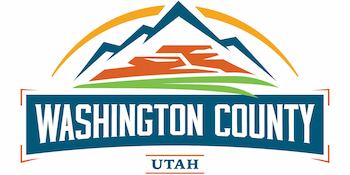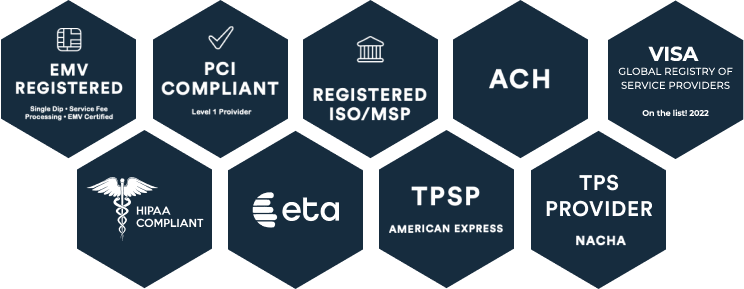For government agencies, choosing the right technology vendors and partners can make or break the citizen and the employee experience. While these partnerships are critical for other industries, they are paramount for government teams who are often working with tighter budgets, stricter timelines, and a customer base that trusts each agency to spend their hard earned tax dollars on technology and platforms that will improve their community and citizen experience.
When agencies are stuck with the unfortunate technology choice of a previous employee or don’t vet new vendors thoroughly, the experience for everyone suffers:
Citizens lose trust in their local government and back office employees struggle with the daily tasks that come with managing new technology. In the payment space, this can look like a checkout experience filled with friction. Citizens might not be able to pay for business licenses or property taxes online. They might be required to come into the office with questions or to make a payment. And they often don’t have full transparency on what bills have been paid or what bills are coming due soon.
For back office employees, the experience could be riddled with struggles for visibility—no clear way to see what money is coming in and what money is going out. And with the wrong partner or vendor, these same employees often struggle to complete basic tasks in a reasonable time. Adding technology that isn’t built for the complexity of government projects doesn’t help, it just adds more work.
Front office employees also struggle when the wrong technology is implemented. These employees need to be able to look up information quickly, make transactions smoothly, and answer questions easily. When technology prevents this, they’re simply required to do more work.
And while it’s clear that a poor technology fit creates more work and less synergy for citizens, back office employees, and front office staff, the ramifications on the backend are even greater. When agencies don’t have full support from their technology vendors, the impact shows up in one key way: downtime.
Downtime is a challenge other industries also experience–and there’s plenty of data to show how big of a problem it can become. In 2015, Apple’s online store was not available for 12 hours because of a DNS issue and it cost the company $25 million. Delta Airlines experienced a power outage for 5 hours and the estimated cost of the downtime was $150 million. And in 2019, Facebook lost $90 million after a 14 hour outage.
For most organizations, the cost of downtime ranges from $2,300 to $9,000 per minute. Industry and company size are important factors, but the money lost is just the material impact. Technology downtime influences the customer experience and customer loyalty. For government agencies who are already under extreme scrutiny, the cost of downtime could result in the loss of citizen trust. For example, if a new payment provider has been implemented and the local government is in the process of encouraging citizens to adopt online payments and the platform experiences a period of downtime, citizens will be less likely to follow the new payment process.
When government agencies choose the right partner, everyone wins. The citizen experience improves and employees can work faster and more efficiently. Here are four ways CORE stands out as a preferred partner to government agencies across the nation:
1. Quick resolution for any problem
Problems are bound to rise with any technology, but with the right support, agencies can find a quick resolution for any challenge. But what does that support look like? At CORE, quick resolutions are found through quick access to the right support teams. This means a U.S.-based customer support team, regular phone hours, after-hours phone options, email support, and a robust ticketing system.
Phone and email support
CORE offers phone and email support during typical business hours from 8:00 a.m. – 5:00 p.m. ET with expanded hours for certain products.
Enterprise communications platform
CORE uses an established and secure communication software that provides CORE team leaders and executives with critical information about call times, time waiting, the wait queue, and more. CORE customers don’t receive a busy signal, they can hold their place in line by opting to leave a message rather than wait on the phone.
After hours support
Priority 1 phone support callers receive after hours, weekend, and holiday phone support. On-call agents review customer voicemails and return calls promptly. Priority 1 customers receive support 24/7.
Robust ticketing system
CORE utilizes an advanced ticketing system. Customers can submit an email to our support team and have a ticket created automatically for our support team to review. Alternatively, customers can also submit a support ticket on our support portal. Each case is escalated based on need and priority and then routed to the right team that can help resolve each issue. Support personnel at CORE can immediately address issues that can be resolved without technical support, or route those cases to the appropriate technical experts. Customers are emailed a ticket confirmation with important details about their case.
2. Better training
A better technology partner means better training from the get-go. Upon implementation, back office and front desk staff are trained on the new platform. If the right training is offered, agency employees are empowered to navigate challenges and likely resolve any issues without additional support. CORE provides an effective training program for all new customers. This training is embedded into the implementation process and designed to help each customer become familiar and comfortable with the new technology.
Test environment troubleshooting
In the final phase of implementation, CORE requires testing of the new system by designated customer personnel. This is the same group that receives training. By requiring testing in this phase, both CORE and the agency employees can troubleshoot for problems and ensure everyone can navigate the new solution.
Administrator training
CORE provides remote training for administrators. This training offers a comprehensive review of reporting, void/refunding, and user management.
Online training
CORE also provides online training for any future training needs. This training is instructor led and can be delivered to any agency employees that need additional instruction.
3. Faster technology adoption
Technology adoption varies from team to team and industry to industry. But to ensure faster adoption, it’s necessary for technology partners to clearly understand existing processes and customize any possible platform features to meet those needs. At CORE, every instance is configured to meet the needs of every customer. At a high level, CORE’s implementation process includes a discovery process, a design planning phase, system configuration, quality assurance training, and ongoing audits to make sure everything is running smoothly.
Business and technical requirements discovery
CORE completes a requirements discovery for every client. During this process, CORE gets a clear picture of existing processes and needs for each customer.
Design planning phase and system configuration
CORE gathers requirements for integration and creates a requirements document during the design planning phase. These details are critical for the system configuration that puts all of these required elements together to build a customized solution for every customer.
Quality assurance testing
Before going live in a production environment, CORE requires quality assurance testing in a test environment for every new customer. By simulating activities in this environment, CORE and the new customer can look for any problems and address any questions.
Ongoing audits
CORE completes ongoing audits for every customer instance. These audits include check-ins with a CORE Customer Success Manager, enabling customers to share any changes or new requirements.
4. Easier technology transition
To ensure an easier technology transition, the right technology partner will value an extensive list of integrations and an opportunity to support government agencies as citizen needs expand and evolve over time. At CORE, this looks like offering customers over 400 integrations that help agencies plug CORE into existing processes and technologies while also shifting to new partners as needs change.
400+ integrations
CORE boasts over 400 integrations that are hosted through the CORE Gateway.
End-to-end revenue cycle management
CORE offers a fully integrated solution. From citizen engagement to reconciliation, the CORE platform offers government agencies an opportunity to improve the payment experience while helping back office employees process payments faster and easier.
Secure payment solutions
CORE offers secure and hosted gateway solutions with multiple processors and bank connection points. Boasting PCI Level 1 compliant software, CORE exceeds industry standards for security and redundancy keeping citizens and agencies safe and secure.
CORE is committed to partnership with every client. At every step in the process—from designing a customized solution for every customer to providing robust training and real-time support—CORE is devoted to customer success, delivering a seamless citizen and agency employee experience.






